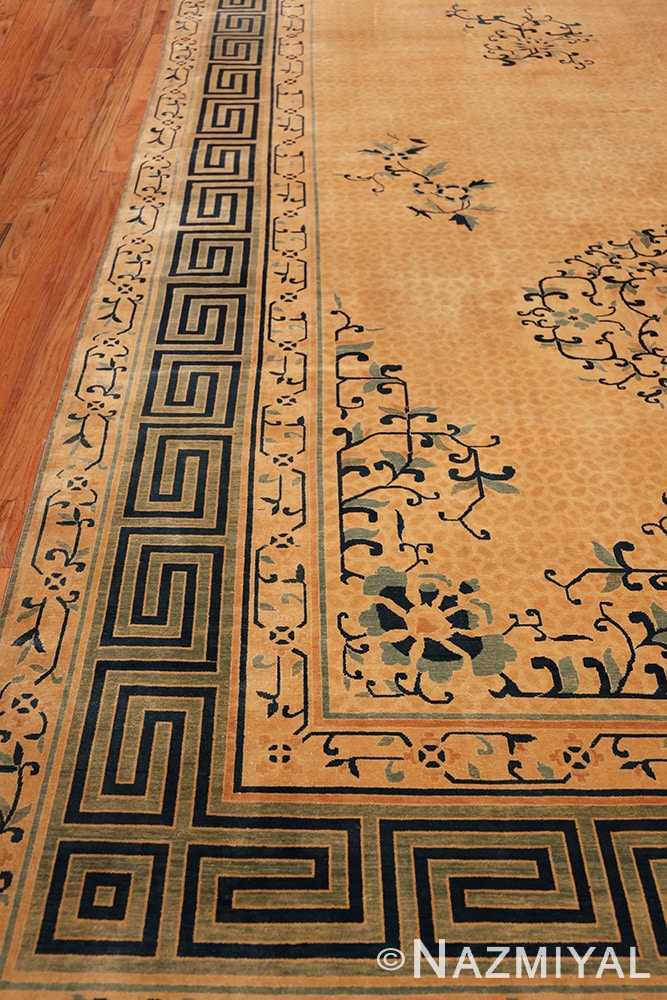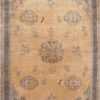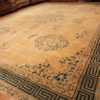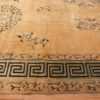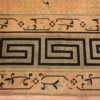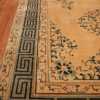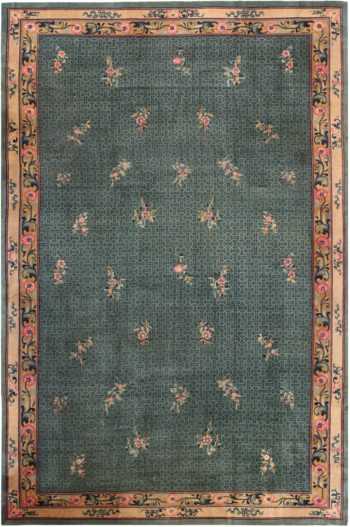Beautiful Greek Key Border Large Oversize Antique Chinese Area Rug 44469
This sublime antique Chinese rug features a stunning combination of traditional Eastern design elements with minimalist medallions, subtle details and chic colors.
Beautiful Large Size Antique Chinese Rug, Origin: China, Circa: 1900 – Impeccably styled, this exquisite antique Chinese rug makes a bold impression with its expansive field, intricate surface patterns and sparse medallions. The airy composition depicts an assortment of elaborate rosettes decorated with ferny vine scrolls, delicate lotus blossoms and spiraling tendrils. The delightful botanical motifs appear again in the exquisite spandrels and the isolated botanical sprigs that dot the field. Magnificent fretwork borders depict strong, solid lines that are juxtaposed by dainty botanical guard bands. Minute repeating patterns rendered in a tone-on-tone combination of golden-yellow add layers of texture and detail to the impeccably crafted and well-balanced composition of this timeless antique Chinese rug.





